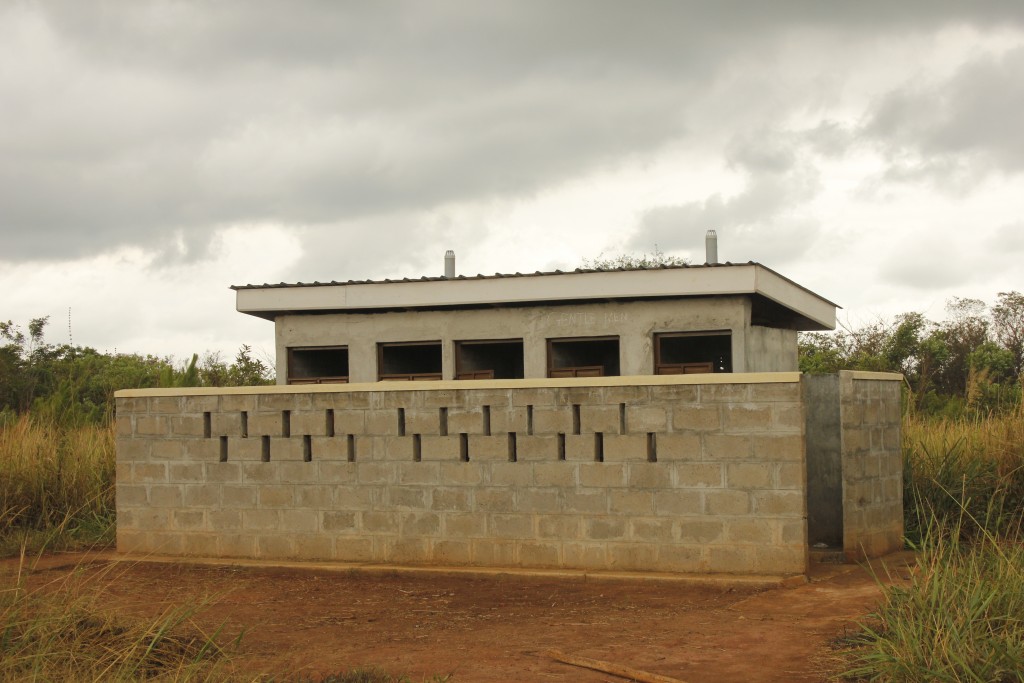The Toilet Question
April 13, 2016Everything you ever wanted to know about latrines but didn’t want to ask
What’s the difference between a toilet and a latrine?
A latrine is a type of toilet. The term latrine is usually used to describe something simpler and more basic than a flushing toilet.
Are there different types of latrines?
The most common type of latrine is a pit latrine. A pit latrine usually consists of a deep hole in the ground (the pit), a concrete slab for the floor with a small hole that leads down to the pit, and a shelter. Pit latrines are built away from residences and away from water sources, to avoid contamination.
 A drainable latrine is a pit latrine that can be emptied. The walls of the pit are lined with brick or cement and the pit is part-filled with water. A pipe leads from outside the latrine to inside the pit. A cesspit emptier can connect to this pipe to drain the waste. With a drainable latrine, it is important to only drop materials into the pit that can decompose. Other materials will block the pipe.
A drainable latrine is a pit latrine that can be emptied. The walls of the pit are lined with brick or cement and the pit is part-filled with water. A pipe leads from outside the latrine to inside the pit. A cesspit emptier can connect to this pipe to drain the waste. With a drainable latrine, it is important to only drop materials into the pit that can decompose. Other materials will block the pipe.
An eco latrine enables human waste to be used as fertiliser. It separates solid human waste (faeces) and liquid waste (urine). The solid waste is collected in a pit where it dries and decomposes. The drying process kills pathogens, leaving it safe to use to improve soil. Meanwhile urine is collected separately and can be used in the creation of fertiliser. This kind of latrine is also called a urine-diverting dry toilet.
Which type of latrine is the best?
Flushing toilets are dependent on the availability of water. Latrines are cheaper to construct and can be used even during water shortages. But each type of latrine has its advantages and disadvantages.
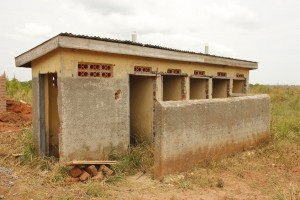 Pit latrines are the cheapest and easiest to construct. But a 5-cubicle pit latrine block at a primary school in Northern Uganda might fill up after 2 years. After this time, the school will need to bury the old pit and dig a new pit and construct a new shelter.
Pit latrines are the cheapest and easiest to construct. But a 5-cubicle pit latrine block at a primary school in Northern Uganda might fill up after 2 years. After this time, the school will need to bury the old pit and dig a new pit and construct a new shelter.
Drainable latrines are more expensive to build but last longer. A drainable latrine at a primary school may need to be emptied after 2 years. But as long as the walls are well built, the structure could last over 15 years until any major maintenance is needed. The school also needs to make sure pupils understand what they can and cannot drop into the pit.
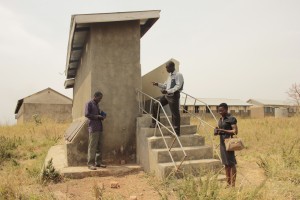 Eco latrines are the most sustainable as they allow the waste to be turned into something useful. But eco latrines are still a relatively new idea. School communities need to get used to the idea of reusing human waste before they can begin to use them. When visiting primary schools in Northern Uganda, African Revival’s Construction Coordinator recommends drainable latrines or eco latrines. They last longer, they are safer, and they are more space efficient.
Eco latrines are the most sustainable as they allow the waste to be turned into something useful. But eco latrines are still a relatively new idea. School communities need to get used to the idea of reusing human waste before they can begin to use them. When visiting primary schools in Northern Uganda, African Revival’s Construction Coordinator recommends drainable latrines or eco latrines. They last longer, they are safer, and they are more space efficient.
Which type of latrine is the most popular in Northern Uganda?
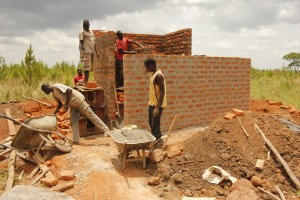 Pit latrines are the most popular in Northern Uganda. In rural areas, community members can dig a pit, place logs over the pit to act as the floor, and construct a shelter with mud and a grass thatch roof – all traditional and locally available materials.
Pit latrines are the most popular in Northern Uganda. In rural areas, community members can dig a pit, place logs over the pit to act as the floor, and construct a shelter with mud and a grass thatch roof – all traditional and locally available materials.
How much does it cost to build a latrine?
A 5-cubicle pit latrine block with brick walls costs around £3,000. A 5-cubicle drainable latrine block costs a little over £5,000.
What is improved sanitation?
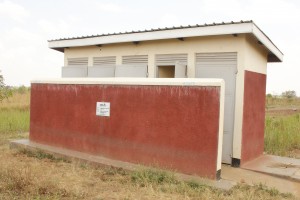 Improved sanitation facilities ensure a hygienic separation of human waste from human contact. Pit latrines with a slab for the floor, drainable latrines, eco latrines, and flushing toilets all count as improved sanitation facilities.
Improved sanitation facilities ensure a hygienic separation of human waste from human contact. Pit latrines with a slab for the floor, drainable latrines, eco latrines, and flushing toilets all count as improved sanitation facilities.
2.4 billion people worldwide do not have access to improved sanitation (WHO 2015). This means they use latrine facilities that do not hygienically separate human waste from human contact. This includes public latrine facilities, pit latrines without a slab for the floor, or they practice open defecation.
What is open defecation?
Open defecation is the practice of going to the toilet outside, for example in fields, forests, sewers, bushes, or bodies of water, rather than in a designated toilet. Almost 1 billion people worldwide practice open defecation (WHO 2015).
When open defecation is practiced in a densely populated area, it becomes a major public health issue. Open defecation can spread diseases such as diarrhoea, intestinal worms, typhoid and cholera. It can also pollute water sources and lead to the spread of waterborne diseases.
Do you have a question about what we do or a topic you would like us to cover?
Message us on Facebook, tweet us, leave a comment on this news update, or email us here.
Source: WHO (2015) http://www.who.int/mediacentre/factsheets/fs392/en/

